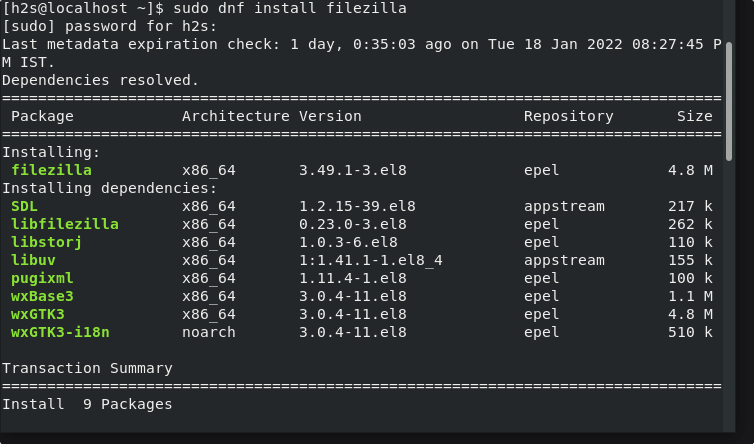

- INSTALL FILEZILLA INSTALL
- INSTALL FILEZILLA SOFTWARE
- INSTALL FILEZILLA CODE
- INSTALL FILEZILLA DOWNLOAD
- INSTALL FILEZILLA MAC
Let’s test the FileZilla client uninstall command.
INSTALL FILEZILLA CODE
Matched exit code 0 to a Success entry in exit codes table. Looking for exit code 0 in exit codes table…


Working directory C:\Windows\ccmcache\3 AppEnforce Prepared command line: "C:\Windows\ccmcache\3\FileZilla_3.53.0_win64-setup.exe" /SĮxecuting Command line: "C:\Windows\ccmcache\3\FileZilla_3.53.0_win64-setup.exe" /S with user context Prepared working directory: C:\Windows\ccmcache\3 Matched exit code 0 to a Success entry in exit codes table confirms the FileZilla client has been installed. You can review the FileZilla application installation progress with the help of AppEnforce.log. Click Applications tab and select FileZilla application.
INSTALL FILEZILLA SOFTWARE
On the client computer, login and launch the Software center. Pick all the distribution points to which the content needs to distribute.
INSTALL FILEZILLA INSTALL
If the application install works fine, you can deploy it to a larger set of devices.ĭuring the application deployment, you will also be asked to select the distribution points to distribute the content. I would recommend deploying the application first to a set of test machines. When you deploy the application you need to specify the target device collection. Right click FileZilla application and click Deploy. In the Configuration Manager console, go to Software Library\ Overview\ Application Management\ Applications. In the next step we will deploy FileZilla client using SCCM. With the above steps we have packaged the FileZilla application in SCCM. Create FileZilla Application in SCCMĬlose the Create Application Wizard. Click Next and on Completion window click Close. FileZilla Application User Experience SettingsĪdditionally you can specify the requirements and dependencies for this application.

This is a folder path where you have the FileZilla application setup file. On the Content Window, specify the content location. On the General window of Create deployment type wizard, select Manually specify the deployment type information. Specify FileZilla IconĪdd a new deployment type by clicking Add button. On the Software Center window, specify the FileZilla icon. Specify the FileZilla application information such as application name, publisher and software version. On the General window of Create Application wizard, select Manually specify the application information.
INSTALL FILEZILLA DOWNLOAD
Download FileZilla ClientĪlong with FileZilla application, you can also download the FileZilla icon. Download the 64-bit FileZilla app and save it to sources folder on SCCM server. At the time of writing this post, FileZilla 3.53.0 is the latest client version. To download the latest version of FileZilla client for Windows, go to FileZilla downloads section. In this post we will download 64-bit client and deploy FileZilla client using SCCM. For Windows OS, FileZilla client is available for 64-bit and 32-bit operating systems.
INSTALL FILEZILLA MAC
FileZilla supports FTP, FTP over SSL/TLS (FTPS) and SSH File Transfer Protocol (SFTP).įileZilla Client is available for several OS including Mac and Linux. We will download the latest version of FileZilla application, package it in SCCM and deploy it our endpoints.įileZilla Client is a fast and reliable cross-platform FTP, FTPS and SFTP client with lots of useful features and an intuitive graphical user interface. This post covers the steps to deploy FileZilla client using SCCM.


 0 kommentar(er)
0 kommentar(er)
